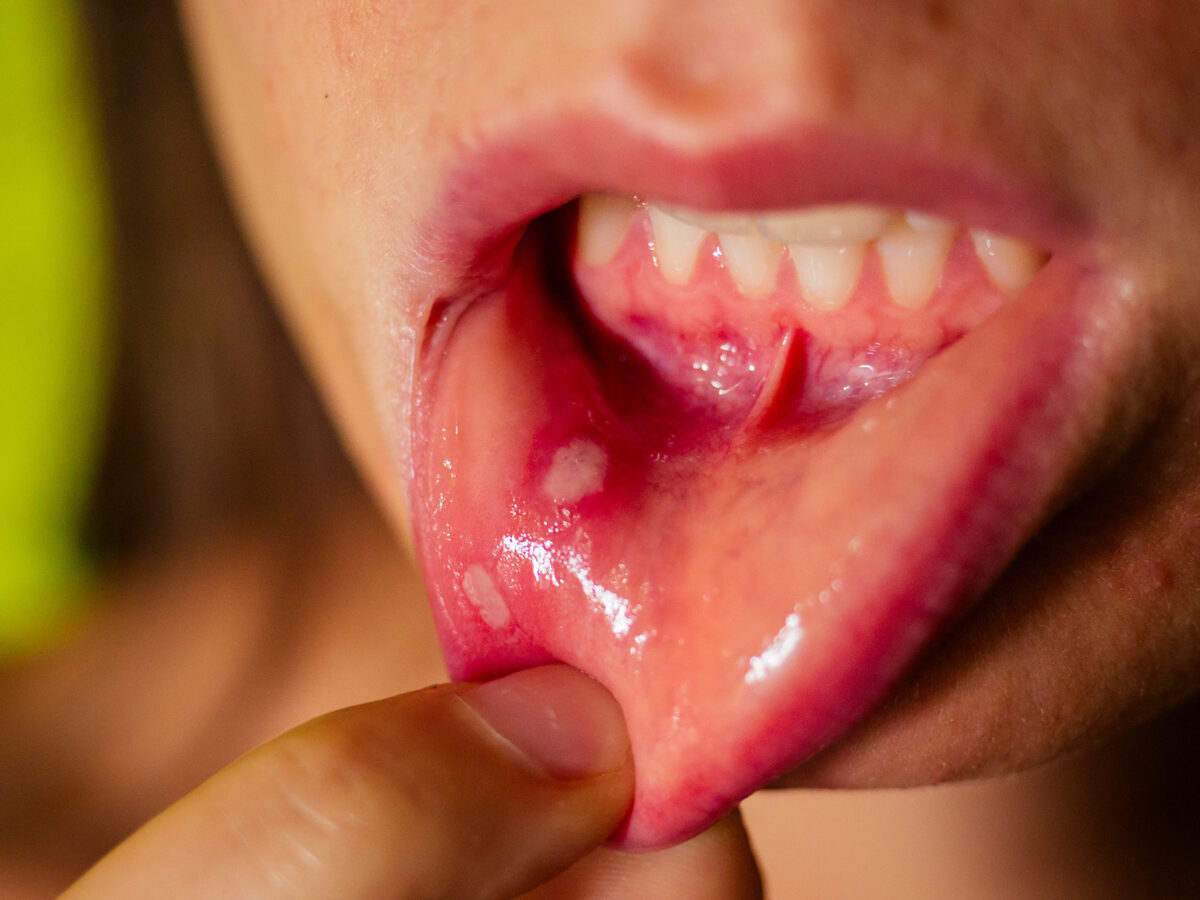Blog
Dental hygiene tips for healthy teeth & gums

How Do You Know If A Mouth Ulcer Is Cancerous?
Millions of individuals all around the world suffer from mouth ulcers. Even though most ulcers are harmless and will heal within a week or two, it is essential to note that some lesions may be malignant. The purpose of this article is to assist readers in recognizing the warning signs of a malignant mouth ulcer and getting treatment as soon as possible if they experience any of these symptoms.
How to Tell a Benign Ulcer From a Cancerous One?
Canker sores and aphthous ulcers, both types of mouth ulcers, are tiny, painful lesions that occur on the mucous membranes of the mouth. They have a yellowish or grey base and a crimson border and are often shallow, round, or oval in shape. Bite wounds, food sensitivities, and emotional stress are common causes of the most common ulcers.
Benign ulcers can be distinguished from cancerous lesions by their lack of the following characteristics:
- Size: The average diameter of a common ulcer is less than a centimeter. It is typically the maximum size they reach.
- Benign ulcers have a median healing duration of 1–2 weeks with no or minimum therapy.
- Although common ulcers can be unpleasant, the discomfort is usually bearable and lessens as the ulcer heals.
- Benign ulcers can return occasionally but won’t get worse or more frequent.
Possible Signs of Malignant Ulcers:
Most mouth sores aren’t something to worry about. However, there are indicators to look out for that could mean you have a malignant lesion:
- Medical attention is warranted if an ulcer doesn’t improve after 2–3 weeks or keeps returning despite self-care.
- Cancerous ulcers tend to be larger than benign ones, and their size may increase.
- In contrast to benign ulcers, malignant lesions may have an irregular shape and fuzzy, ill-defined edges.
- Even after using over-the-counter pain relievers, mouth ulcers associated with cancer tend to be more uncomfortable.
- Cancerous ulcers can cause the patient to experience pain based on their location and size.
- The presence of a mass or lump: Cancerous ulcers are sometimes accompanied by a palpable mass or swelling in the mouth or neck.
Precautions to Take and When to Seek Medical Help
Having a malignant mouth ulcer is more likely if you have any of these risk factors:
- Persistent ulcers in people with a history of using tobacco products or drinking excessive alcohol should prompt them to seek medical attention.
- Infection with certain strains of the human papillomavirus (HPV) has been linked to an increased risk of developing mouth cancer. Patients with a history of HPV infection or an ulcer that persists or looks worrisome should see a doctor.
- Individuals predisposed to developing malignant mouth ulcers may have a family history of oral cancer or another type of cancer.
Wrapping Up
It is essential to be aware of the warning indications of a malignant lesion, even though most mouth ulcers are benign and go away independently. Warning signs include a lump or mass that is large or has an unusual shape, hurts constantly, makes swallowing or talking difficult, or proliferates.
The likelihood of adequate care and positive results is significantly increased when a diagnosis is made and treated promptly. Therefore, it is always recommended to consult a healthcare professional for a complete evaluation and peace of mind if the nature of a mouth ulcer is unclear.


